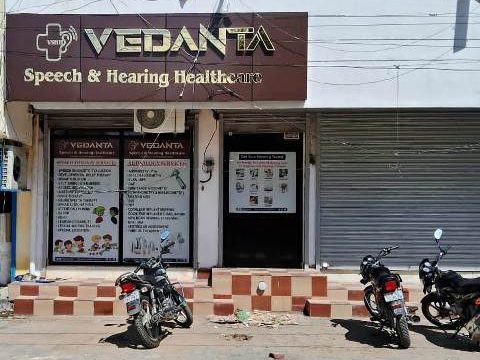Accurate tests to assess hearing and recommend care.
Helping children and adults speak clearly and confidently.
Digital hearing aids fitted for your lifestyle and hearing loss.
From evaluation to AVT, we’re with you at every step.
Advanced hearing implant solutions for better clarity.
Consult online from the comfort of your home.
Accurate tests to assess hearing and recommend care.
Helping children and adults speak clearly and confidently.
Digital hearing aids fitted for your lifestyle and hearing loss.
From evaluation to AVT, we’re with you at every step.
Advanced hearing implant solutions for better clarity.
Consult online from the comfort of your home.

Apraxia, specifically Apraxia of Speech (AOS) when referring to speech disorders, is a motor planning disorder that affects a person’s ability to coordinate the movements needed for speech, despite having normal muscle strength. Unlike dysarthria, which is about weak or paralyzed speech muscles, apraxia is about the brain failing to send the correct movement signals to the speech muscles. The muscles are fine — the brain's instructions are not. Causes of Apraxia is
Stroke Traumatic brain injury (TBI) Brain tumors Neurodegenerative diseases (e.g., primary progressive apraxia) Congenital (Childhood Apraxia of Speech – CAS): present from birth, not due to brain injury
Apraxia of speech (also called Childhood Apraxia of Speech (CAS) in children) is a motor speech disorder where the brain has difficulty planning and coordinating the movements needed for speech. It is not caused by muscle weakness or paralysis, but rather by a breakdown in the brain’s ability to send the correct signals to the muscles involved in speaking.
Childhood apraxia of speech is a type of speech disorder. It’s present from birth. A child with this condition has problems making sounds correctly and consistently. Apraxia is a problem with the motor coordination of speech. It’s different from aphasia, which is a problem with the use of words. The speech centers of the brain help plan and coordinate what a child would like to say. These parts of the brain send complex signals to the speech muscles of the face, tongue, lips, and soft palate. Normally, all this signaling works smoothly, and a child can make all the sounds he or she needs. With childhood apraxia of speech, something in this process goes wrong. The speech muscles seem to work properly, and the child knows what he or she wants to say. But the brain has trouble working with the muscles to create the movements needed for clear speech. Childhood apraxia of speech is not the same as developmental delay of speech. Developmental delay is when a child follows a normal path of speech development, just at a slower rate. Childhood apraxia of speech can range from mild to severe. It’s not a common condition. It happens more often in boys than in girls.
To help the patient speak as clearly and effectively as possible, and use alternative communication strategies if needed—so they can engage fully in daily life.
Vedanta Speech and Hearing Centre plays a crucial role in the assessment, diagnosis, treatment, and long-term management of Aphasia—a common communication disorder after stroke or neurological conditions.
Inconsistent speech errors (same word may be said differently each time) Groping for sounds or struggling to form words Difficulty imitating speech (even simple sounds) Slow or halting speech Better automatic speech (e.g., saying “hello”) than intentional speech Frustration due to being unable to express thoughts clearly
Apraxia of Speech (AOS):A neurological disorder where a person knows what they want to say, but their brain struggles to plan and sequence the speech movements.
Oral (Nonverbal) Apraxia:Difficulty making movements of the mouth, lips, or tongue when not speaking — e.g., sticking out the tongue or blowing a kiss on command.
Limb Apraxia:Inability to perform purposeful movements with arms/legs, despite physical ability.
Vedanta provides comprehensive speech-language evaluations using clinical tools and technology. Our team assesses: Speech intelligibility Oral-motor function (lips, tongue, jaw) Voice quality and breath control Swallowing function
Based on the diagnosis, Vedanta therapists create a custom treatment plan tailored to each patient’s needs and severity of dysarthria. Therapy focuses on Motor-based therapy Melodic Intonation Therapy (MIT) Augmentative and Alternative Communication (AAC) Intensive, frequent practice Strengthening weak muscles Improving articulation and clarity Training in speaking at an appropriate speed and volume Teaching breathing techniques for better voice control
Vedanta provides ongoing therapy and progress tracking, adjusting treatment plans as needed to support continuous improvement.
Don’t Wonder If You Or Your Loved Ones Have Hearing Loss Or Speech Disorder; Find Out For Sure With Advanced Tests. Vedanta Speech And Hearing Healthcare Is Ready To Help You Or Your Loved One To Live Better. It All Starts With An Honest Conversation About Your Hearing Loss or Speech Disorder And a Test.

Vedanta Speech and Hearing Healthcare
# Number 6/1, MC Office Road, Punjabi Mohalla, Ambala Cantt # SCO 109, 1st Floor, Sector 40-C, Chandigarh Other Healthcare Centers also available at Ambala City, Chandigarh (Tricity), Jammu, Roorkee
91-7060360346 | +91-7347347718, Monday – Saturday | 10:00 am to 7:00 pm